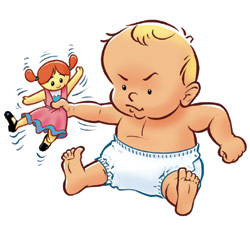What Every Parent Should Know About Shaken Baby Impact Syndrome

What is Shaken Baby Impact Syndrome (SBIS)?
Why is it so dangerous?
In SBIS, fragile blood vessels tear when the baby’s brain shifts quickly inside the skull. The build-up of blood in the small space puts pressure on the brain and eyes. Sometimes rough movements can also detach the retina (the light-sensitive back of the eye), leading to blindness. Signs of SBIS include tiredness, irritability, and breathing problems (although there may not be any obvious symptoms right away). In very serious cases loss of consciousness, blindness, motor deficits, learning disabilities, and other serious consequences including death may follow.
How does it happen?
SBIS commonly occurs in stressful situations when infants cry and are inconsolable. When nothing seems to soothe the infant, a tired, frustrated caregiver may handle the baby too roughly.
How can SBIS be prevented?
Babies cannot communicate any other way but by crying. When your baby cries but does not respond to being picked up or nursed, something else could be wrong. Above all, babies must be handled gently, and never shaken.
- Toss a baby into the air;
- Swing a baby by the arms or legs;
- Jog or run with a baby strapped to your back or chest;
- Vigorously bounce your baby on your knee;
- Spin with the baby in your arms.
Always:
- Support the head when lifting or carrying a very young baby;
- Comfort the baby with cuddling, gentle rocking, and soothing words;
- Make sure that anyone else who handles your baby knows how to do so carefully.


